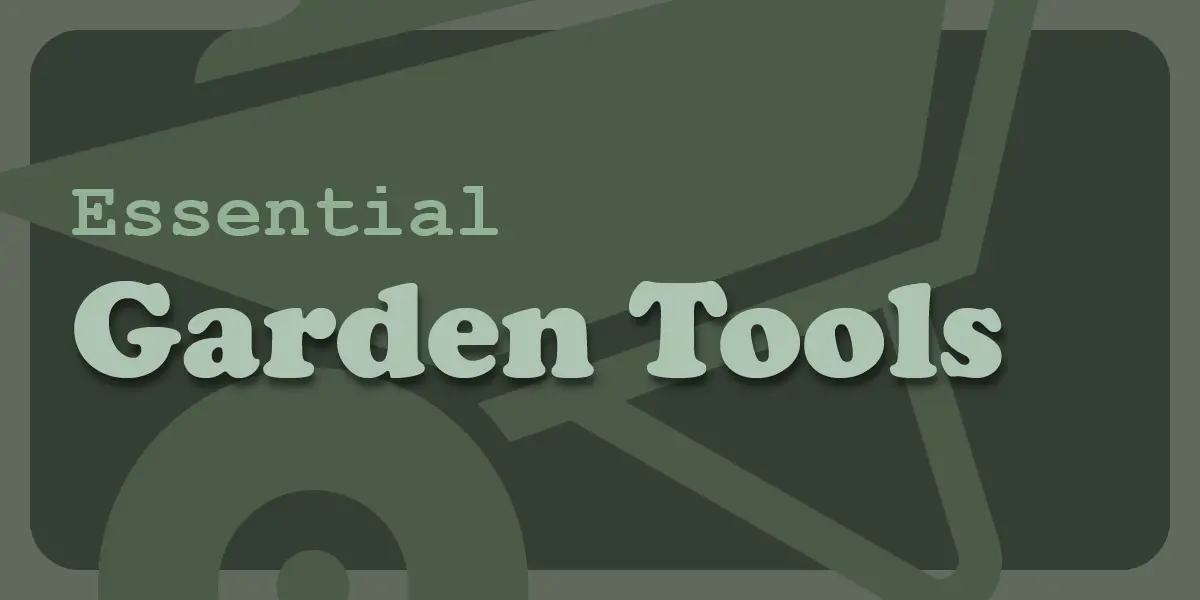LA’s dry and sometimes unforgiving soil can make even simple yard projects challenging. You may find therapy in gardening, but do you want to work harder than you need to? In SoCal’s mild climate with year-round plant growth, the upkeep never ceases, even in February.
Having the right tools in your shed can save time, effort, and money and perform much better than less specialized tools.
Whether you’re a novice or a seasoned horticulturist, here are the gardening and landscaping tools you should have in your collection.
1. Shovel
You’ll need a sharp-edged shovel to plant succulents, break up dry soil, remove rocks, and spread mulch or gravel. Opt for a fiberglass-handled model resistant to weathering and wear and tear.
Application
- Heavy-duty digging (unless you own a backhoe).
- Moving gravel or soil typical of drought-tolerant landscapes.
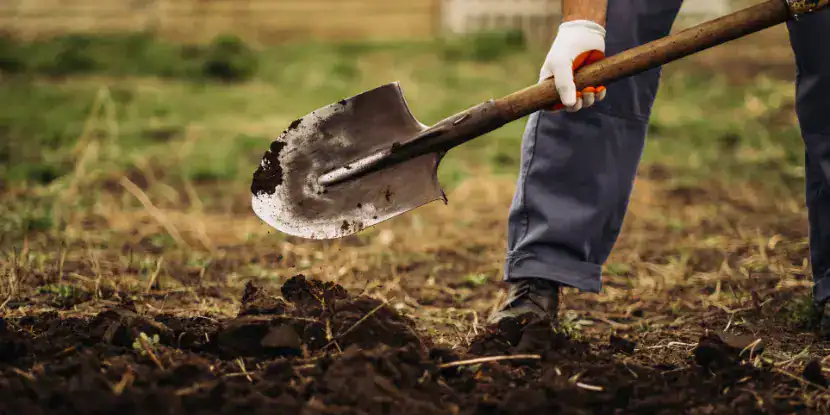
A shovel is an ancient garden tool that’s still among the most useful.
2. Pickaxe
A pickaxe is your best friend for particularly tough landscapes with compact soil or rocky conditions (a common occurrence in Los Angeles). It breaks apart stubborn ground and makes deep digging much easier.
Application
- Breaking up compact soil.
- Clearing rocks or roots during large projects.
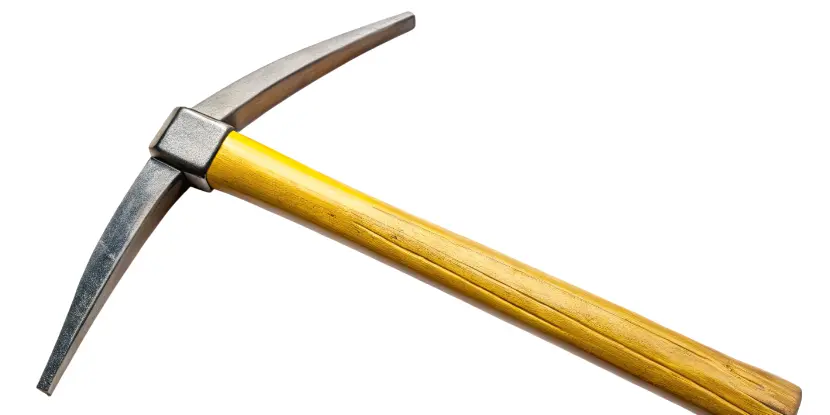
Enter the pickaxe to break up tough or rocky soil, dig deep trenches, or mine the backyard for gold.
3. Garden Hoe
The hoe’s sharp edge effectively breaks up dirt and weeds while saving your back from hours of bending.
Application
- Weeding large areas.
- Turning or breaking up soil.
Tip
A stirrup hoe (a scuffle hoe) is ideal for gravel yards or xeriscapes. It cuts weeds just below the surface with minimal effort.
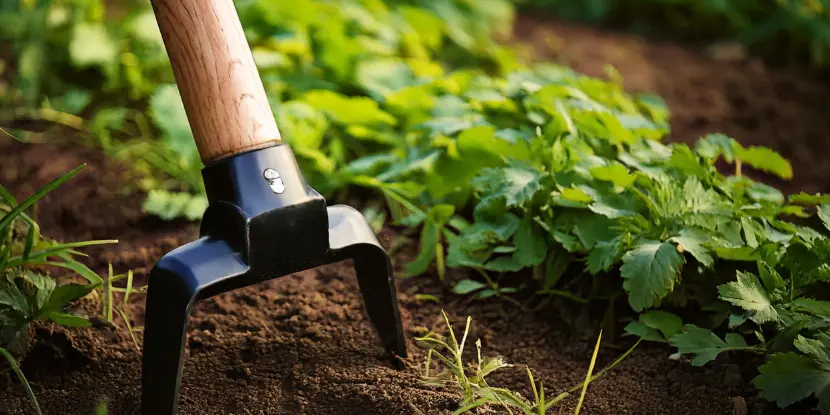
A stirrup hoe is hands down the best tool for light weeding in a garden or xeriscaped yard.
5. Garden Rake
This sturdy rake helps you level dirt and mulch for an even finish. The spreader bar allows debris to pass through, leaving only the desired materials behind.
Application
- Removing leaves or small rocks from lawns.
- Shaping beds or evening surfaces after grading.
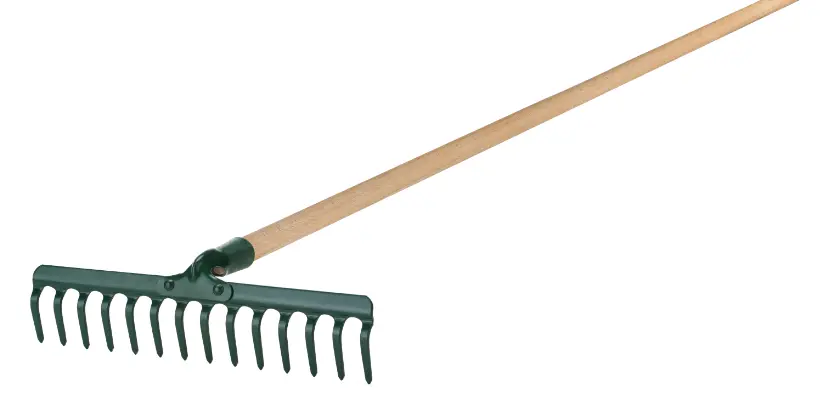
A garden rake has inflexible tines and is good for removing small rocks or shaping garden beds.
6. Leaf Rake
Unlike a garden rake, this broader tool features flexible tines that pick up large quantities of leaves and other light debris.
Application
- Gathering fallen leaves into piles for bagging or composting.
- Clearing out flower beds or under shrubs.
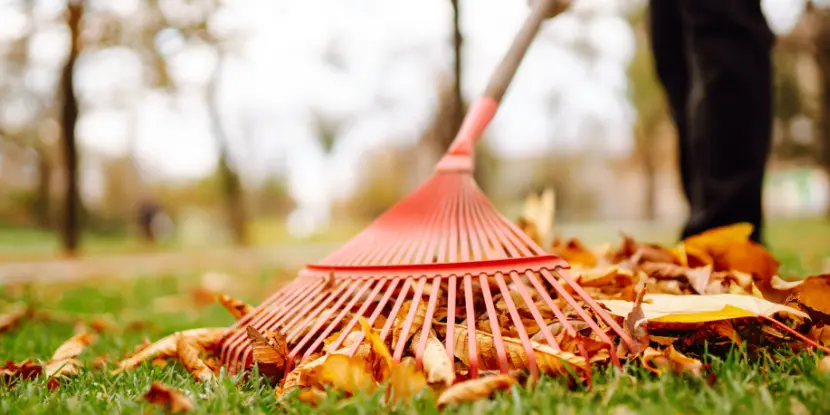
A leaf rake has wide, flexible tines and is best for collecting leaves and twigs.
7. Pruning Shears
These clippers are designed for small branches and stems that need precision cuts. They make short work of pruning roses, vines, and other ornamental plants.
Application
- Shaping hedges or bushes.
- Deadheading flowers to encourage new growth.
Tip
Purchase a good pair of bypass pruners (they work like scissors) with replaceable blades to ensure long-lasting use.
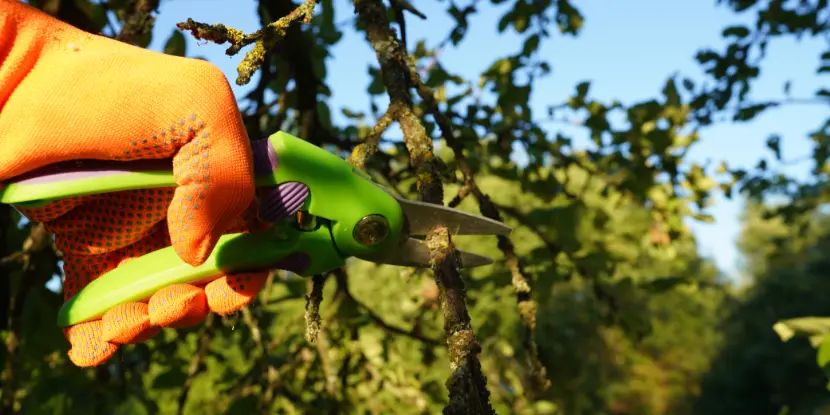
Use pruning shears to shape plants, remove deadheads, and trim small branches.
8. Hedge Trimmer
This baby helps you trim bushes and hedges where hand shears are impractical or inadequate. Look for lightweight models with adjustable blades.
Application
- Shaping and evenly trimming large hedges or shrubs.
- Maintaining topiary or sculpted plant forms.
Tip
Electric trimmers are an investment but can save you time and physical strain.
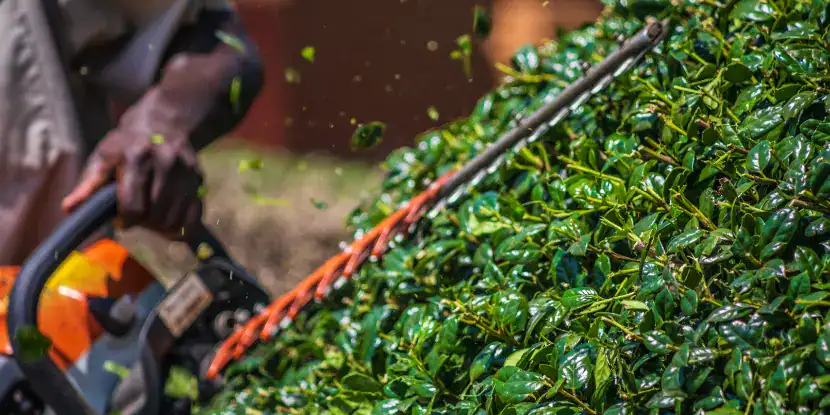
Got big hedges? Then you’ll want a power trimmer to keep them in shape.
9. Wheelbarrow
A no-brainer. You won’t want to carry a heavy load of soil, mulch, or rocks by hand more than once.
Application
- Transporting heavy materials around your yard.
- Mixing large batches of soil or compost.
What to Buy
Choose lightweight, corrosion-resistant materials like those in a poly tray wheelbarrow for easy maneuverability.
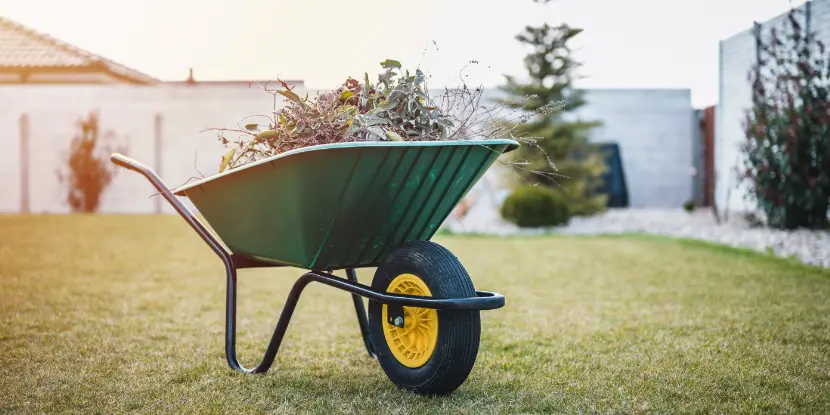
A wheelbarrow spares you the backbreaking labor of carrying heavy materials.
10. Hand Trowel
A trowel offers control and accuracy for precise planting or tackling flower beds. Use it to plant flowers, dig up weeds, or transfer soil.
Application
- Digging small holes for planting.
- Removing small weeds or grasses.
Features to Look For
- Ergonomic handles for comfort.
- Stainless steel blades to prevent rust.
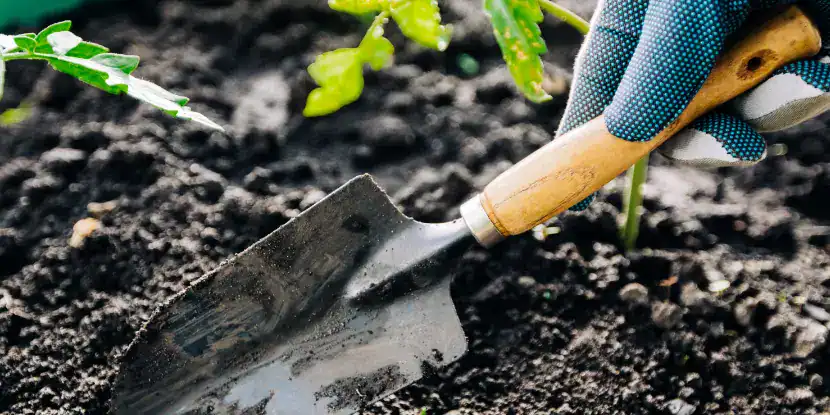
No gardener should be without a trowel for digging, weeding, and planting.
11. Leaf Blower
Even in balmy Los Angeles, autumn leaves are a problem. Save time and energy with a leaf blower that can also clean patios and walkways.
Application
- Clearing fallen leaves from lawns and hard surfaces.
- Sweeping off patios and driveways.
Tip
Choose an electric model to comply with California CO2 mandates and avoid noise complaints. Gas-powered blowers can reach 100 dB at full throttle, roughly equivalent to a chainsaw at close range. Some models emit 8.6 lbs of CO2 in an hour, plus levels of non-methane hydrocarbons (NMHC) and carbon monoxide (CO) comparable to driving a car for hundreds of miles.
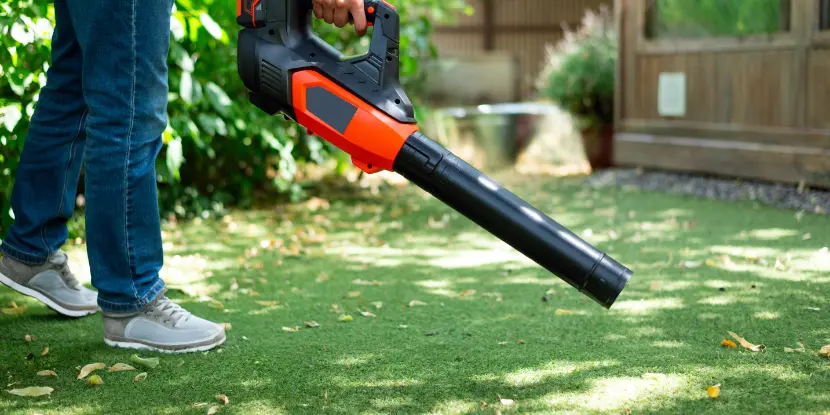
You, too, can be one of those annoying neighbors with a leaf blower! For quieter and cleaner operation, opt for electric.
12. Garden Cart
A garden cart is a four-wheeled alternative to wheelbarrows, perfect for heavy loads. It often comes with a flatbed to transport large bags of mulch, soil, or plants.
Application
- Moving heavy materials around your yard.
- Hauling gardening tools or supplies.
Features to Look For
- Choose a cart with pneumatic tires for stability on uneven terrain.
- Opt for carts with high weight capacities (at least 300 lbs) to handle large loads.
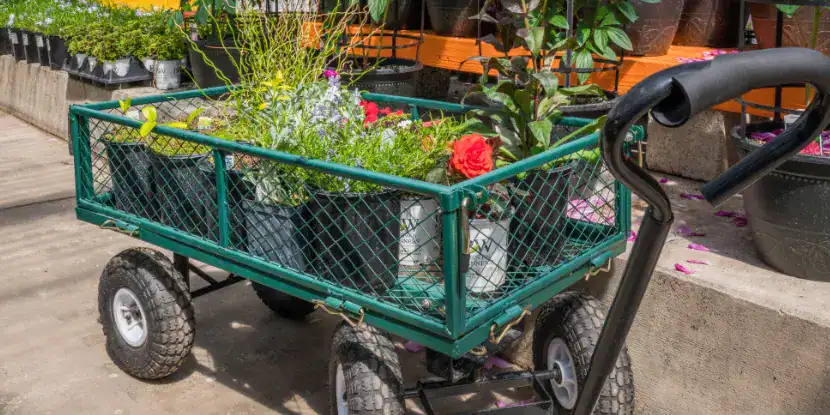
A garden cart can handle heavy loads that may be too much for a wheelbarrow.
13. Edging Shears
These specialized shears have long handles and blades that can reach deep into bushes and borders. They keep gardens tidy by trimming grass along walkways or around trees.
Application
- Trimming grass edges in tight spaces.
- Maintaining the shape of flower beds and borders.
Features to Look For
- Adjustable blades for different angles.
- High-quality, sharp blades for precision cuts.
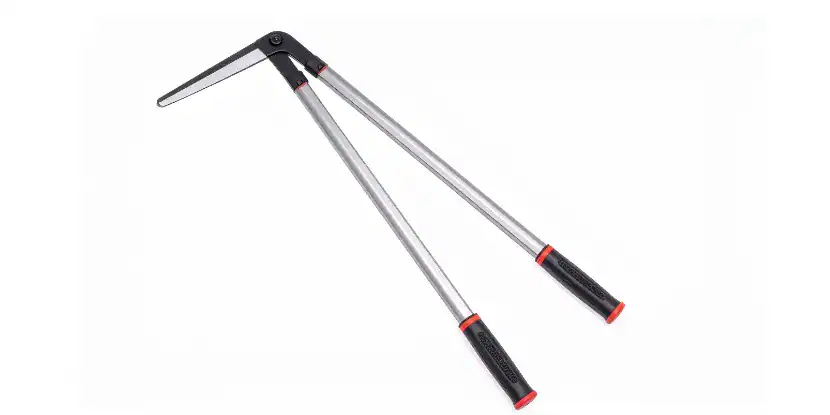
Edging shears have long handles and blades that can reach deep into bushes and borders.
14. Digging Fork
This cousin of the pitchfork has sturdy, curved tines for turning soil or mulch as you dig in a garden bed. It penetrates soil more readily than a shovel.
Application
- Turning compost or incorporating organic matter into the soil.
- Saving your back from heavy lifting by using it instead of a shovel for light-duty digging tasks.
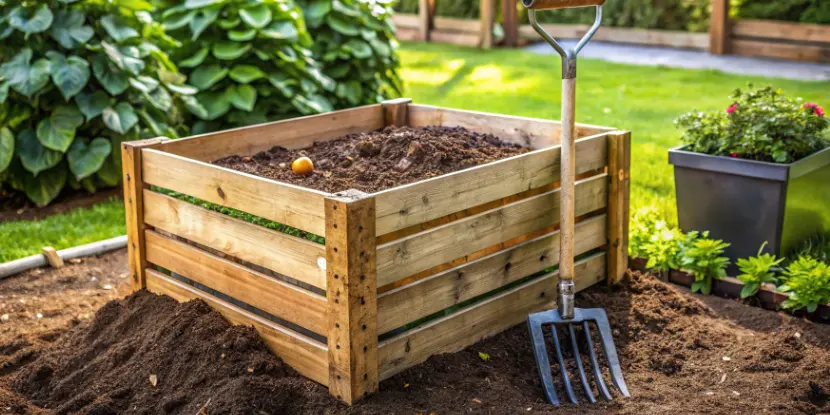
Not for salad or spaghetti! Reach for the garden fork to turn compost, aerate the garden, and penetrate compact soil.
15. Tree-Trimming Saw
A tree-trimming saw with a curved blade is the tool you need to prune small limbs and branches. Many models come with extendable handles to make the job even easier and save you from a tumble off the ladder.
Application
- Pruning trees and shrubs.
- Cutting through larger branches or thick stems.
Features to Look For
- Curved blades for more efficient cutting.
- Anti-corrosion coatings for longevity.
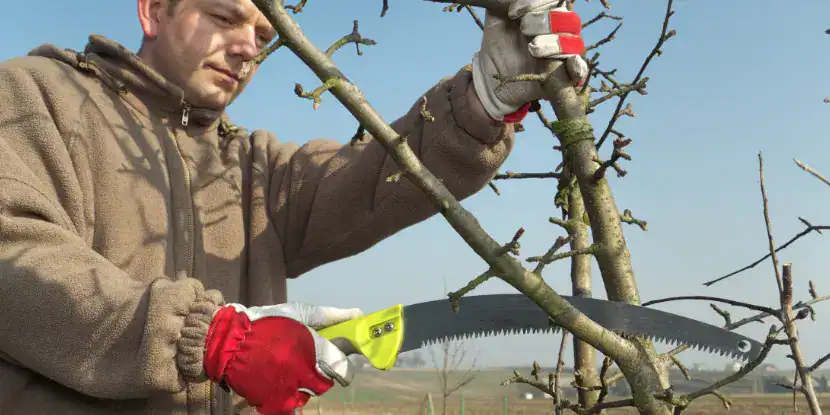
Some tree saws have folding blades for safe, compact storage.
16. Weed Puller
Weeds are the bane of any gardener’s existence, but a weed puller helps you extract them, roots and all, without straining your back.
Best Style
Look for a long-handled model to reduce bending over, especially for vigorous weed infestations.
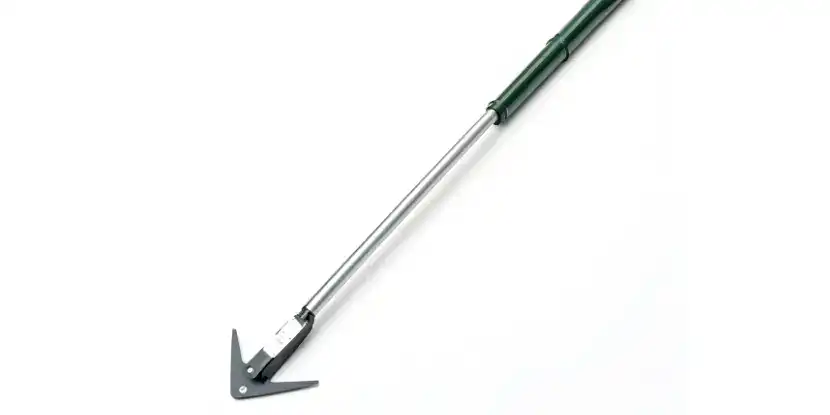
A long-handled weed puller can reduce strain on your back.
17. Watering Can
A watering can enables targeted watering without dousing nearby foliage or roots.
Best Features
- Look for a sturdy, rust-resistant metal style with a long spout for reaching tight spaces.
- Ergonomic handles can make watering less of a chore.
Tip
Metal cans are preferable to plastic since they don’t break down in sunlight, and one won’t heat your water like black plastic. Keep a few metal styles on hand for those scorching summer days when plants need regular drinks.
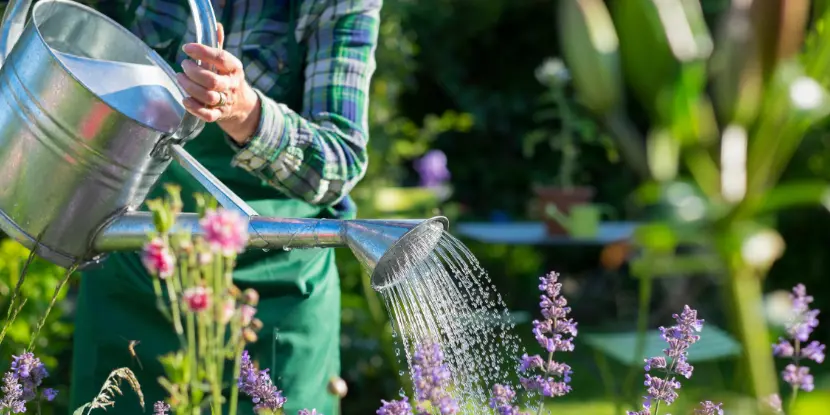
Invest in a metal watering can with a generous capacity.
18. Garden Hose
A large garden demands the flexibility of a hose to hydrate plants, wash patios, fill fountains, etc.
Application
- General watering needs in the garden.
- Cleaning surfaces like patios or outdoor furniture.
Tip
Vinyl hoses can split and leak over time, while rubber or space-age expandable hoses are more durable and less likely to kink. Consider the length of your hose based on your garden size and water pressure.
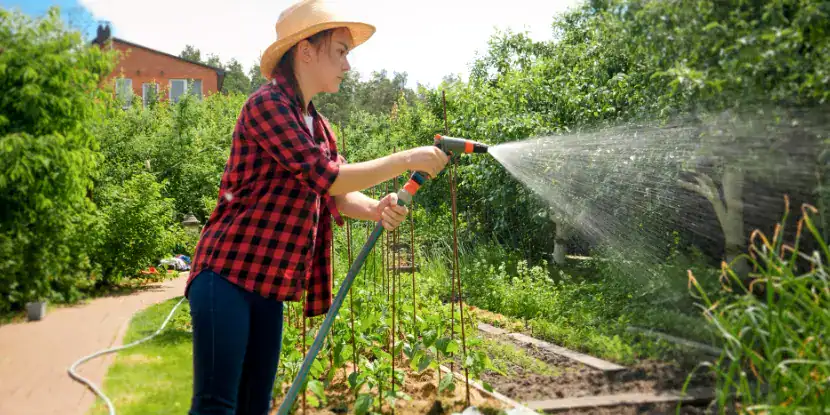
Invest in a rubber or expandable hose that’s more durable and less likely to kink than vinyl.
19. Loppers
Loppers are the best tool for pruning small trees or branches that are too thick for pruning shears but too thin for a saw.
Application
- Pruning tree limbs or thicker shrub branches.
- Removing dead or damaged plant parts.
Features to Look For
- Bypass-style loppers work like scissors and make clean cuts without crushing plant tissue.
- Choose a model with long handles for better reach and leverage.
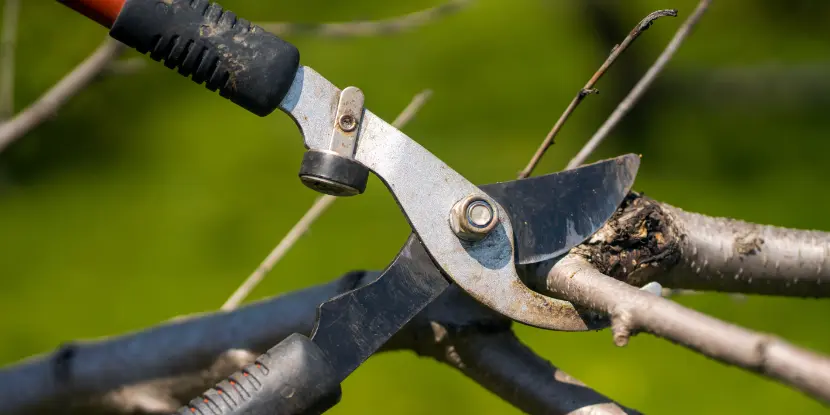
Loppers can easily sever branches too tough for pruning shears. The long handles give you extra leverage.
20. Push Broom
Once the planting, digging, and pruning are done, it’s time to tidy up! A push broom will help you collect any leaves, soil, or debris the leaf blower misses.
Tip
Choose a stiff-bristled broom that can handle rough surfaces like concrete driveways or stone pathways. Look for a long handle to avoid straining your back while sweeping.
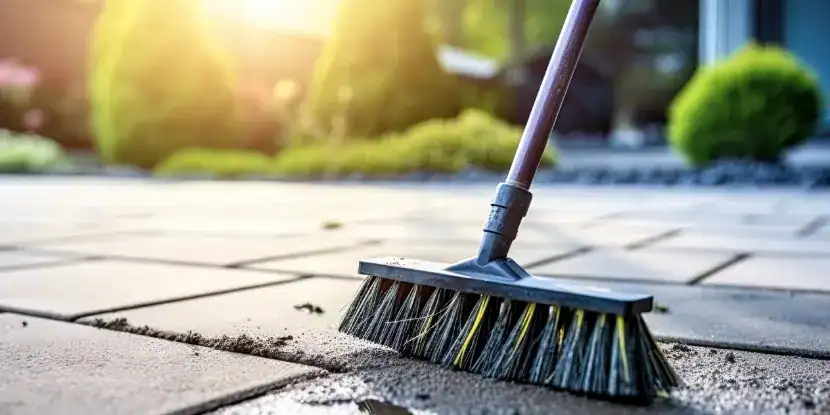
You’ll need a sturdy push broom to keep your walkways clean.
Additional Tips
- Don’t forget the safety gear like gloves and knee pads when working in the garden.
- Regularly clean your tools to ensure they last longer and maintain their edge.
- Invest in multipurpose tools, such as a garden rake with adjustable tines or pruning shears with replaceable blades, to save storage space and money.
- Use ergonomic tools or take breaks frequently to prevent strain on your body.
- Prioritize quality over price. The right gardening tools can make a massive difference in the time and effort needed to maintain a beautiful outdoor space.
FAQs: Essential Gardening Tools
Q: How often should I clean and maintain my gardening tools?
It’s best to clean your tools after each use and sharpen or oil them as needed. This will prolong their lifespan and ensure they work effectively.
Q: Should I prioritize ergonomic features when choosing gardening tools?
Ergonomically designed tools can reduce strain on your body and make gardening tasks more comfortable. Look for features like padded handles or adjustable lengths.
Q: What type of gloves are best for gardening?
Look for durable, puncture-resistant gloves that protect your hands from thorns and sharp objects. Lightweight, flexible gloves are ideal for delicate tasks like planting seeds.
Q: Are electric or gas-powered tools better for gardening?
Electric tools are generally quieter, more eco-friendly, and require less maintenance than gas-powered options. However, gas-powered tools typically provide more power, making them suitable for heavy-duty tasks.
Q: How do I prevent rust on my tools?
Clean your tools thoroughly after use, removing dirt and moisture. Store them in a dry place, and apply a light coat of oil to metal surfaces for added protection.
Q: What’s the best tool for aerating compact soil?
A garden fork or a manual aerator is effective for loosening compact soil. For larger areas, consider renting or purchasing a mechanical aerator.
Q: How can I make my gardening more eco-friendly?
Use compost from kitchen scraps to reduce waste, choose manual or electric tools instead of gas-powered ones, and collect rainwater for irrigation. Opt for native plants that require less water and maintenance.
Q: What basic tools should a beginner gardener start with?
A beginner should start with a hand trowel, pruning shears, a garden fork, a watering can, and gloves. These essential tools will cover most basic gardening tasks.
Q: What about a lawnmower? Isn’t that kind of basic?
Yes — so basic we left it off the list. We assume that if you have a lawn, you already own a mower or pay someone to do the mowing. At any rate, a mower is a much more expensive piece of equipment that deserves its own blog. In the meantime, keep clipping.

